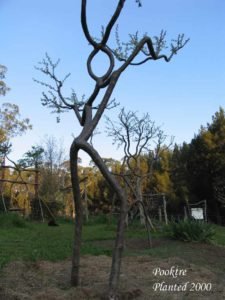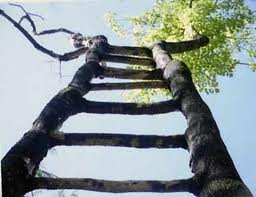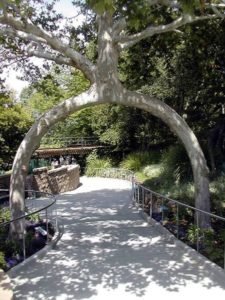by Susan Dean | Feb 6, 2018 | Plants, Trees
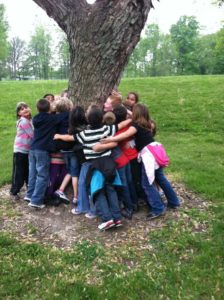
WE LOVE TREES!
Just touching that old tree was truly moving to me because when you touch these trees, you have such a sense of the passage of time, of history. It’s like you’re touching the essence, the very substance of life. – Kim Novak
Research a favorite tree or give students clues and let them go on a scavenger hunt. Some things to include might be:
Scientific and other common names of the tree:
Habitat and Environment
Kind of seed
Flowers, fruit, or cones?
Estimated height
Circumference (measured 4 feet above the ground )
Above ground roots?
What is the soil like?
The color, texture and strength of the bark
Does the tree shed it’s bark?
Leaves or needles?
Shape, color, texture, size, strength, vein pattern of leaf or needle.
How many other trees like this are around.
Any animals in, on, or around the tree?
How much sunshine does it get?
Other interesting knowledge about this tree
EVERYTHING DANCES!





by Susan Dean | Feb 6, 2018 | Plants, Trees

Don’t you dare climb that tree
or even try, they said, or you will be
sent away to the hospital of the
very foolish, if not the other one.
And I suppose, considering my age,
it was fair advice.
But the tree is a sister to me,
she lives alone in a green cottage
high in the air and I know what would
happen, she’d clap her green hands,
she’d shake her green hair,
she’d welcome me. Truly
I try to be good but sometimes
a person just has to break out and
act like the wild and springy thing
one used to be. It’s impossible not
to remember wild and want it back. So
if someday you can’t find me you might
look into that tree or – of course
it’s possible – under it.
Mary Oliver
The Pink Peach Tree Van Gogh
Peach Trees in Blossom Van Gogh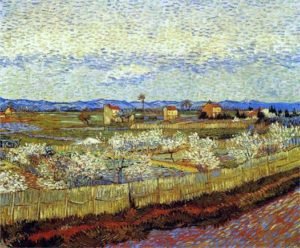
Apple Tree in Blossom Van Gogh

Apple Trees on Chantemesie Hill Claude Monet
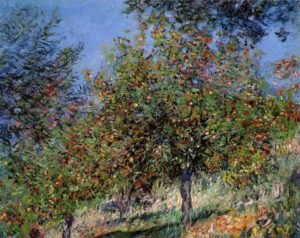
Tree of Life Gustav Klint

Palms John Singer Sargent
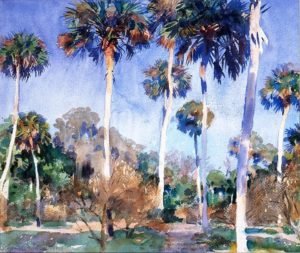
Sunlight Effect Under the Poplars Claude Monet

Four Trees Egon Schlele

The Olive Grove John Singer Sargent
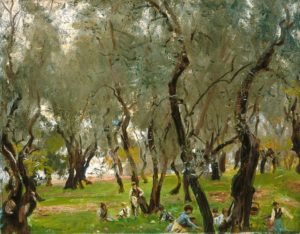
The Poplars Claude Monet
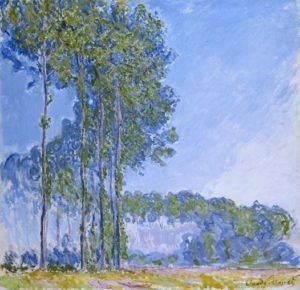
Avenue with Flowering Chestnut Trees Vincent Van Gogh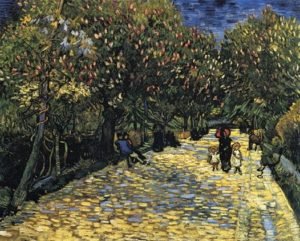
Trunks in the Grass Vincent Van Gogh
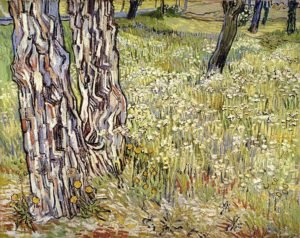
The Pink Orchard Vincent Van Gogh

FLOWERING PLUM TREE CAMILLE PISSARRO
PLUMS BLOSSOM CLAUDE MONET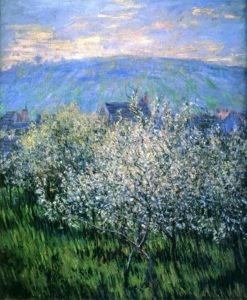
Orchard in Bloom Claude Monet

The Olive Grove Vincent Van Gogh

Branches With Almond Blossom Van Gogh

Orchard in Blossom Vincent Van Gogh

Pine Trees Against a Red Sky With Setting Sun
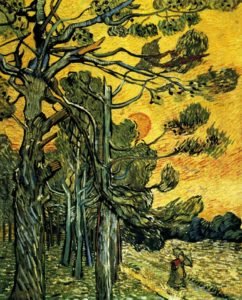
The Olive Grove William Merritt Chase
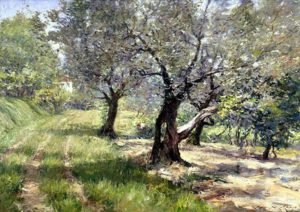
Beech Trees Steele

Olive Trees Van Gogh
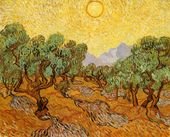
The Tree House Klee
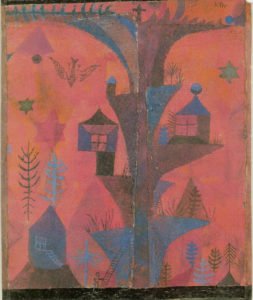
Walking Next To The River Fernando Botero
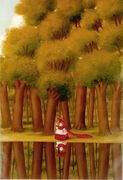
Willow Tree

Apple Tree With Red Fruit Paul-ElieRanson

Blossoming Pear Tree Van Gogh
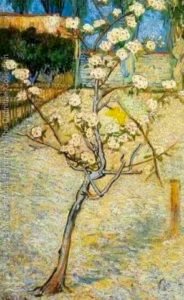
Apple Trees in Bloom at Giverny Monet

In the Woods Cezanne

Mulberry Tree Van Gogh

Cypresses Van Gogh

Red Tree Mondrian

Birch Forest Klimt

Beech Forest Klimt

Apple Tree Mondrian
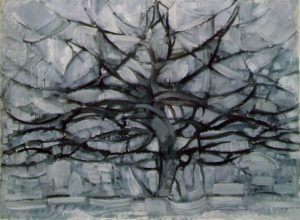
Apple Tree Gustav Klimt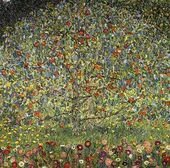
Joy of Life Matisse

A Palm Tree Monet

Apricot Trees In Blossom Van Gogh

by Susan Dean | Feb 6, 2018 | Plants, Trees
e

Tree shown on the new Vermont 25¢ coin: Maple
The Dutch disease nearly wiped out this tree: Elm
The Christmas partridge was in this tree: Pear
Spanish moss hangs from this southern tree: Live Oak
Largest tree species by volume: Sequoia
Noah’s dove brought back this branch: Olive
Tree associated with Lebanon: Cedar
Berries from this tree used to make gin: Juniper
The tree with knobby knees: Baldcypress
What little acorns grow into: Oak
Texas state tree: Pecan
John Chapman’s claim to fame: Apple
It is to the south what the lilac is to the north: Crapemyrtle
President Andrew Jackson’s nickname: Hickory
Tree Robert Frost talks about in his poem: Birch
Most common U. S. Tree: Silver Maple
Tropical island tree: Palm
The village smithy worked under this tree: Chestnut
Tree most struck by lightning: Oak
Everlasting life is the symbol of this tree: Yew
The tree with bark like elephant skin. Beech
Favorite tree lovers carve their initials in: Beech
World’s tallest species of tree: Redwood
Oldest living tree (4844 years): Bristlecone Pine
Tree associated with Burmese rain forests: Teak
Mississippi’s state tree: Magnolia
Before barb wire, it was called the “living fence”: Osage Orange
In England this tree is called a sycamore: Maple
The “Lord of the Forest” in New Zealand. Tane Mahuta
The state tree of South Carolina. Palmetto
Men collect tears of sap from this tree often used as incense. Frankinsence
We use the beans from this tree to make chocolate. Cacoa
This tree has the largest seed of all. Coconut
This tree blooms in spring and has markings of the crucifixion on the flower. Dogwood
Long ago people used knots from this tree for light. Pine
This tree is a lunar tree that sheds it’s bark to white limbs. Plane tree or Sycamore
We get delicious syrup for our pancakes from this tree. Sugar Maple
The flower is sweet but the fruit is sour. Lemon
What is the smallest living tree? The dropsickle tree
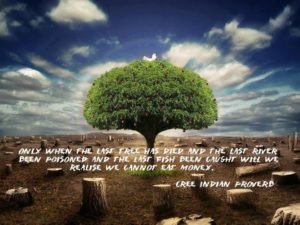
by Susan Dean | Feb 5, 2018 | Plants, Trees

Old Methusela, a bristlecone pine tree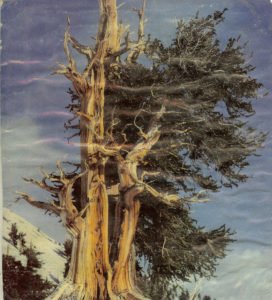
Wolf Lichen on a tree
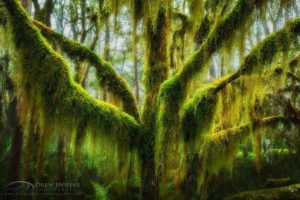
Tree of Life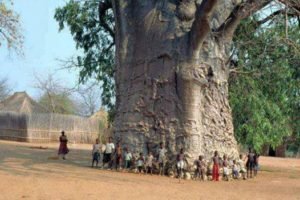
El Arbor del Tule
The Tree with the Largest Diameter in the World:
El Arbol del Tule – This tree is an Ahuehuete or Montezuma Cypress growing in Oaxaca, Mexico in the town of Santa Maria del Tule. The trunk of the tree is 33 feet in diameter and has a circumference of 178 feet. Originally thought to be multiple trees that had grown and fused together, DNA tests have shown that it is actually all one tree.
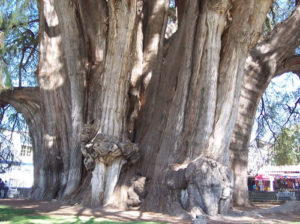
Strawberry Tree (Arbutus ‘Marina’) on Hermann Street near Duboce Park shows off its flowers.
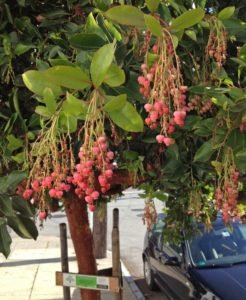
Rainbow Eucalyptus trees on Maui, Hawaii. The phenomenon is caused by patches of bark peeling off at various times and the colors are indicators of age. A newly shed outer bark reveals bright greens which darken over time into blues and purples and then orange and red tones.
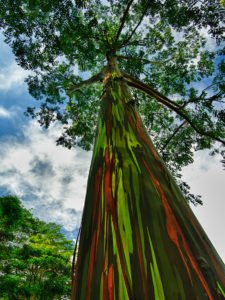
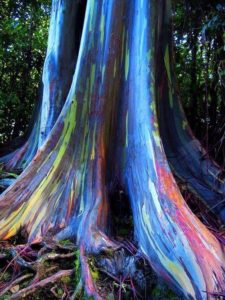
Brazilian Grape Tree known as Jabuticaba does not use branches to grow fruits. It grows fruits (and flowers) directly on the trunk.
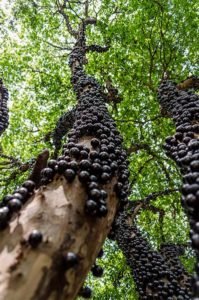
American Elm Central Park

The Angel Oak
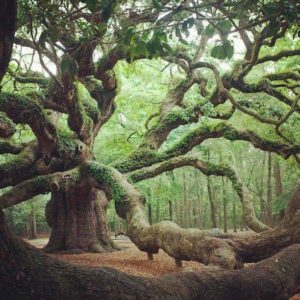
WISTERIA TREE JAPAN
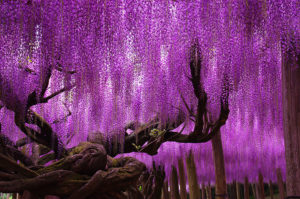
Olive Tree
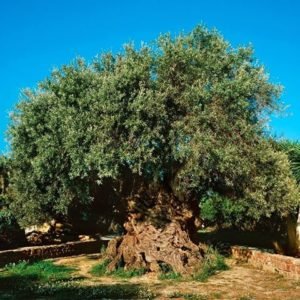
Jomon Sugi

Llangernyw
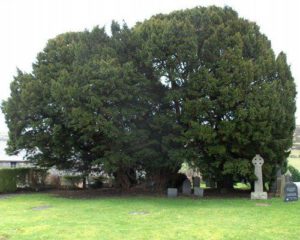
The Majestic Oak
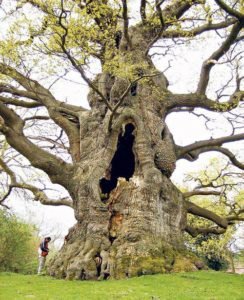
General Sherman

The Senator

The President
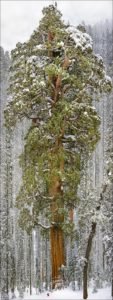
Monkey Puzzle Tree
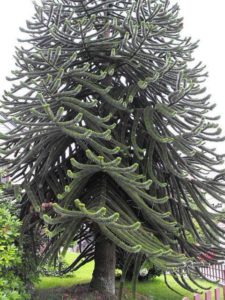
Patriarcada floresta
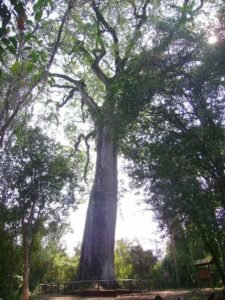
King Oak Tullamore, Ireland

National Park Tasmania
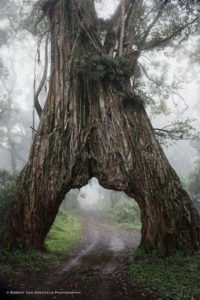
Kapok Tree Mexico
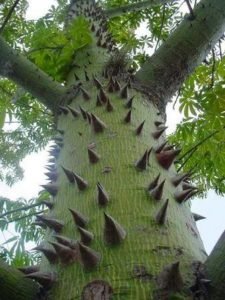
Root Cave Big Sur
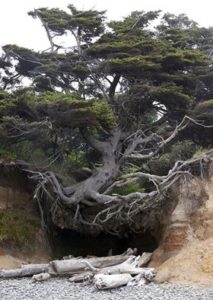
The Knarled Tree
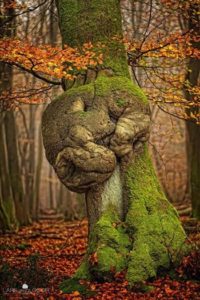
Birch Eyes
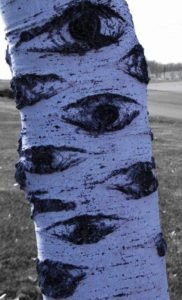
The Crooked Forest 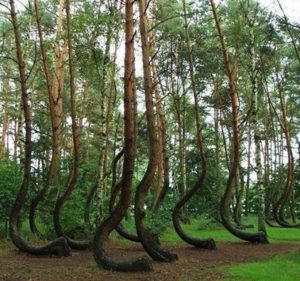
Square Trees

Pine Tree with 6 legs

Japanese Maple Oregon 
Dragon Tree

125 year old Rododendro
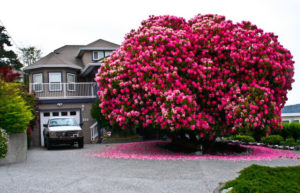
Underwater Mangrove Trees
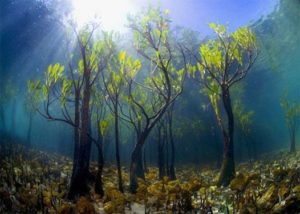
Canada’s most knarled tree

Alerce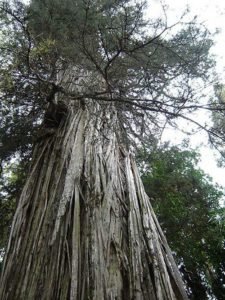
Petrified Trees

Banyan Tree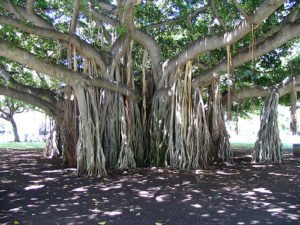
The World’s largest Cashew Tree
Maior Cajueiro do Mondo is located in Natal, Brazil. The gigantic tree has grown from an amalgamation of two genetic tissues. Such tissues allow the branches of the tree to grow outwards rather than upwards. Gradually, hence, the branches tend to stoop towards the ground and eventually make for a root. This new root further grows into a new tree.
The massive tree occupies 80,000 square feet of land or roughly five acres. It is guessed to be around thousand years old. One can easily climb a tower to view this tree from a vantage point or for that matter, even climb up through the roots.
You can heartily go and pay a visit to this enormous work of nature. However, beware of the orange caterpillars. These gorgeous looking insects are poisonous. They swamp over the tree seasonally and are a size of a finger.
The beauty of this tree is that it produces 60,000 pieces of cashew fruit each year. As for some people it may come as a surprise that a cashew nut is not the fruit but a single nut is attached only to the bottom of the fruit!
Maior cajueiro mundo

Cajueiro mundo
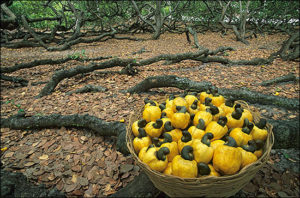
Baobab tree

Sagole Baobab S. Africa
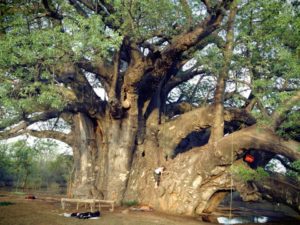
Frankincense Tree
Spider Web Cacooned Trees
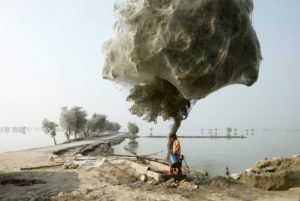
Dropsickle Tree
Underwater Forest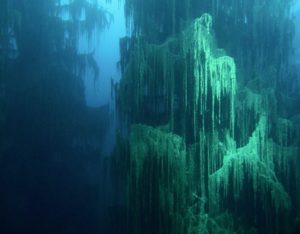
Dragon Trees
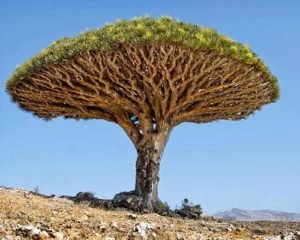
Angel Oak
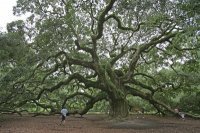
Octopus Trees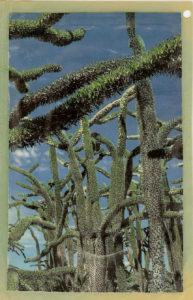
Giant Sequoia
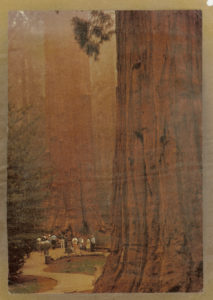
Bottle Tree
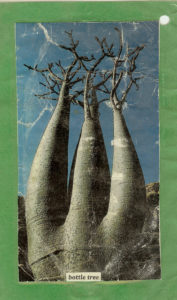
Fan Palm

Umbrella Tree

Chandelier Tree
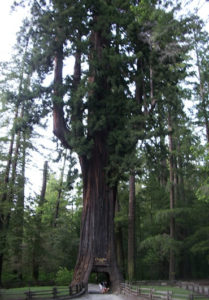
BIg Kauri Tree
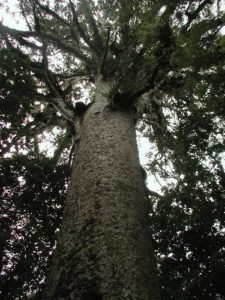
Tree- Tenere
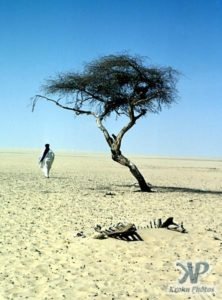
Bamboo Forest
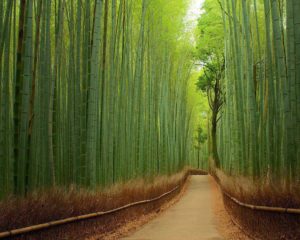
Tree Grass
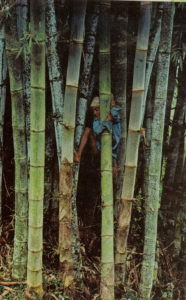
Sausage Tree

Sarv Abarqu
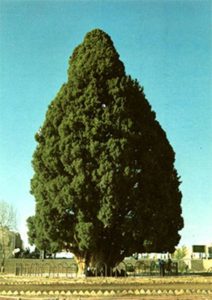
The tree that owns itself!
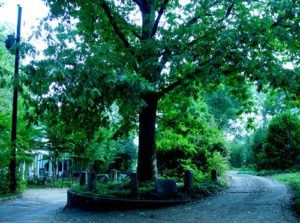
by Susan Dean | Feb 5, 2018 | Plants, Trees

Trees come in various shapes and sizes but all have the same basic structure. They have a central column called the trunk. The bark-covered trunk supports a framework of branches and twigs called the crown. Branches in turn bear the leaves.
A tree is anchored in the ground by a network of roots, which spread and grow thicker in proportion to the growth of the tree above the ground. The growth of new tissue takes place by the division of specialized cells located at the tips of branches and roots and in a thin layer just inside the bark.
Trees have reproductive structures; either flowers or cones. Leaves, bark, twigs and fruit can make quick work of tree identification. Shape plays a key role in tree species characteristics.
Leaves are the food factories of the tree. Powered by sunlight, the green substance chlorophyll uses carbon dioxide and water to produce life-sustaining carbohydrates. The process is called photosynthesis. Leaves are also responsible for respiration and transpiration. A tree’s leaf is one major marker that helps in identifying any species of tree. Most trees can be identified by the leaf alone.
Leaves come in many shapes and sizes. The “star” shape of sweetgum is totally different from the heart-shaped leaf of an eastern redbud.
A mature tree grows another important structure – the flower (or cone, in the case of evergreens). These are the reproductive structures from which seeds are produced. These seed pods, cones, flowers and fruit are markers that help in identifying a specific species of tree.
Twigs can be used to identify a tree. Twigs have structures called buds, leaf scars and bundle scars that can be different on different species. Thorns and spines can occur on twigs and are unique to certain trees.
The bark rids the tree of wastes by absorbing and locking them into its dead cells and resins. Also, the bark’s phloem transports large quantities of nutrients throughout the tree.
Xylem carries water and minerals from the roots to the leaves. Phloem carries manufactured food (sugars) from the leaves to the roots. The cambium is the generative layer, giving rise to both xylem and phloem. Bark textures are divided into at least 18 types, from smooth (beech) to spiny (locust).

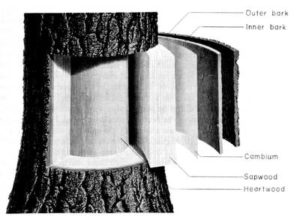
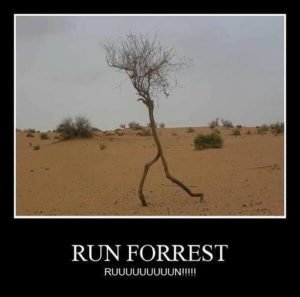
by Susan Dean | Feb 5, 2018 | Plants, Trees




